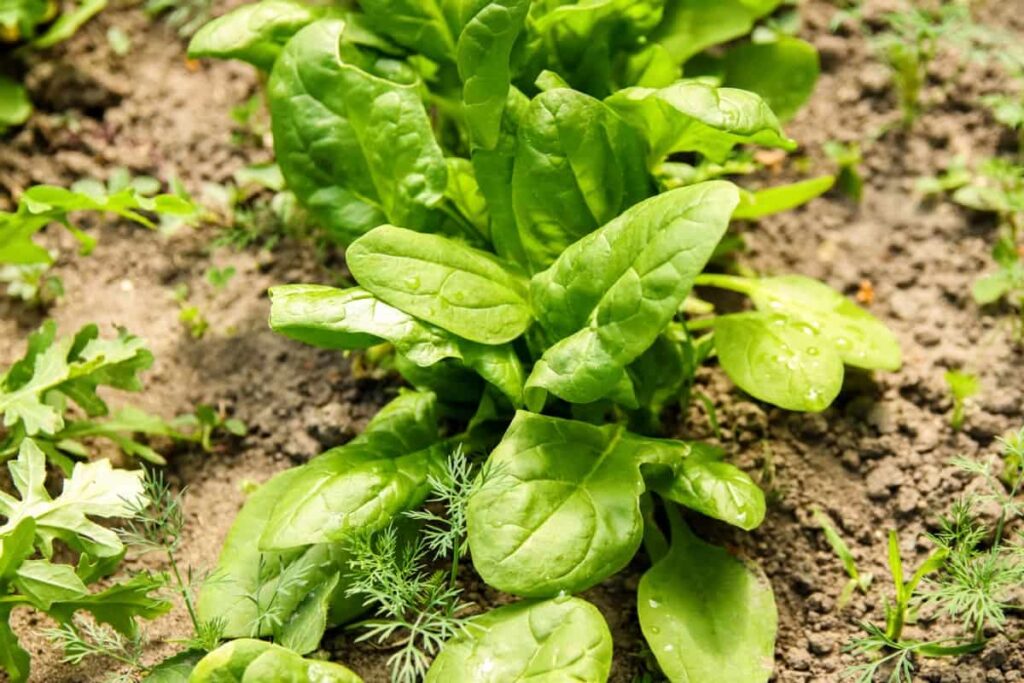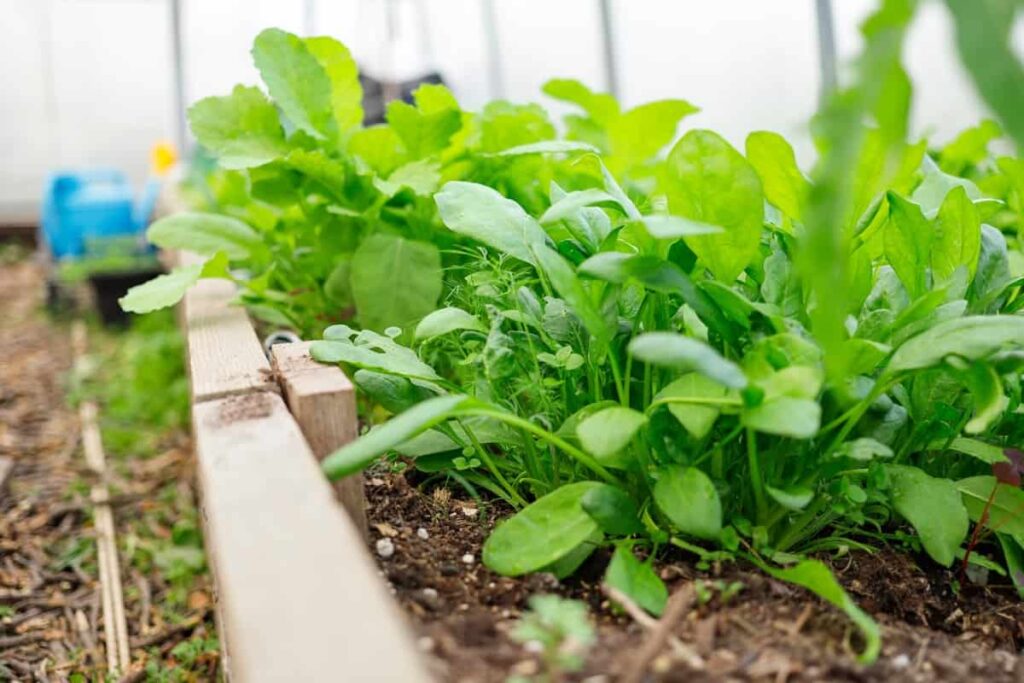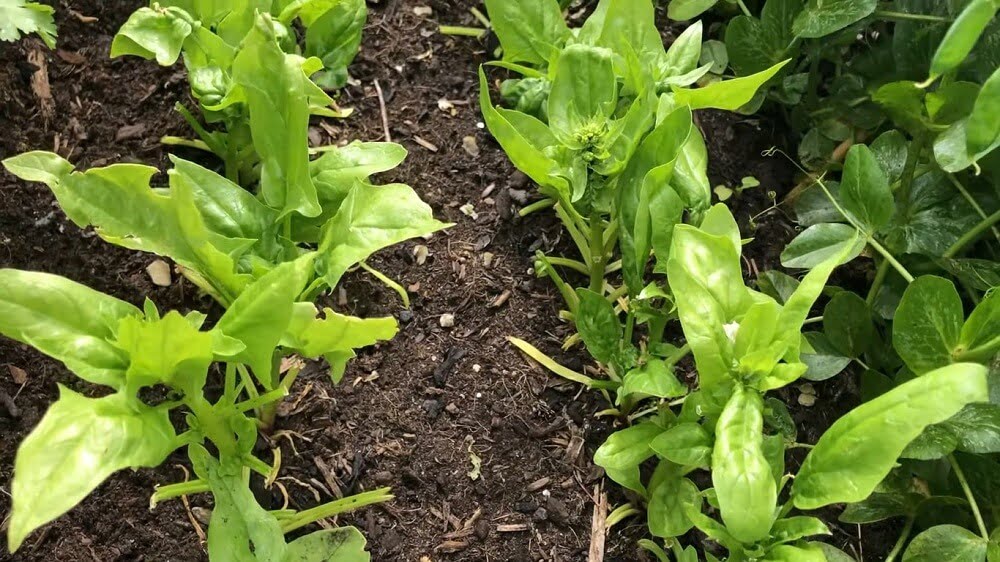So you’ve found yourself with a patch of spinach that has decided to bolt – what now? Dealing with bolting spinach can be a frustrating and perplexing situation for any gardener or cooking enthusiast. In this article, we will explore the best practices for handling this common issue, providing you with expert tips and advice on how to tackle the problem head-on. From understanding the causes of bolting to implementing preventative measures, we’ve got you covered. Don’t let bolting spinach dampen your gardening or culinary spirit – let’s get started!

Understanding Bolting in Spinach
What is bolting?
Bolting in spinach refers to the premature production of flowers, which leads to the decline in the quality and taste of the spinach leaves. When spinach bolts, it focuses its energy on flowering and producing seeds, rather than continuing to produce tender leaves. This process usually occurs when the spinach plant is exposed to certain environmental conditions, such as high temperatures or long daylight hours.
Causes of bolting
Several factors can contribute to the bolting of spinach. The most common causes include:
High temperatures: Spinach grows best in cool weather, but when exposed to prolonged periods of heat, it may trigger the plant to bolt.
Long daylight hours: Spinach plants require a certain amount of darkness to grow and develop properly. If they are exposed to too much daylight, they may start to bolt.
Aging plants: As spinach plants age, they become more vulnerable to bolting. This is especially true if they have not been harvested regularly.
Stress: Stress factors such as insufficient watering, poor soil fertility, or pest infestation can also contribute to the bolting of spinach.
Signs of bolting in spinach
It is important to recognize the signs of bolting early to take appropriate measures. Here are some signs to look out for:
Leaf changes: When spinach plants start bolting, their leaves become tougher, thicker, and more bitter in taste. They may also develop a lighter green or yellowish color.
Flower stalk development: Bolting spinach plants will eventually produce elongated flower stalks with small clusters of greenish or yellowish flowers.
Seed production: If left unattended, the flowers on bolted spinach plants will turn into seed pods, which can be harvested for future planting.
Preventive Measures
Selecting the right spinach variety
To minimize the risk of bolting, it is crucial to select spinach varieties that are known for their resistance to bolting. Look for varieties that are specifically labeled as “slow-bolting” or “bolt-resistant.” These varieties are more likely to remain in the leaf-producing stage for a longer period.
Optimal planting time
Planting spinach at the right time is essential to prevent bolting. Spinach prefers cool temperatures, so it is best to plant it in early spring or late summer when the temperatures are moderate. Avoid planting spinach in the peak heat of summer, as this will increase the chances of bolting.
Managing temperature and light exposure
To prevent bolting, it is important to provide your spinach plants with the optimal temperature and light conditions. Keep the plants in a shaded area or provide them with shade covers during the hottest parts of the day. Additionally, consider planting spinach in areas that receive partial shade or use reflective mulch to reduce heat stress.
Proper watering techniques
Consistent and adequate watering is crucial to prevent bolting. Keep the soil evenly moist, avoiding both overwatering and underwatering. Mulching around the plants can help retain soil moisture and regulate soil temperature, reducing stress on the spinach plants.
Mulching to regulate soil temperature
Mulching around your spinach plants can help regulate soil temperature and prevent bolting. Use organic mulch, such as straw or compost, to insulate the soil and keep it cooler during warmer months. This will also help preserve soil moisture and prevent weed growth, which can compete with spinach for nutrients.
Regularly monitoring and harvesting spinach leaves
Regularly monitoring your spinach plants is essential to catch any signs of bolting early on. Harvest the outer leaves frequently to encourage continuous leaf production and prevent the plant from going into reproductive mode. Harvesting also helps to maintain the quality and flavor of the spinach leaves.

Recognizing Bolting Early
Observing plant growth patterns
Carefully observe the growth patterns of your spinach plants to spot any early signs of bolting. If you notice rapid elongation of the plant stems or the setting of flower buds, it is an indication that bolting is imminent. Regular monitoring will allow you to take timely action to prevent the complete transition to the flowering stage.
Noticing changes in leaf structure
Pay attention to any changes in the appearance and texture of the spinach leaves. When spinach starts to bolt, the leaves may become thicker, tougher, and more bitter. They may also develop a lighter green or yellowish color. Recognizing these changes can help you address the issue promptly.
Examining flower stalk development
Flower stalk development is a clear indicator that the spinach plant is in the process of bolting. Inspect the plant for any elongated flower stalks emerging from the center of the plant. These stalks will eventually produce flowers and lead to seed production if not addressed in a timely manner.
Dealing with Bolting Spinach
Pruning flower stalks to prevent energy depletion
Once you notice the emergence of flower stalks, it is essential to remove them promptly. Pruning the flower stalks will prevent the spinach plant from diverting its energy towards flower and seed production. By removing the flower stalks, you encourage the plant to focus on leaf growth and prolong its productivity.
Harvesting spinach leaves before flowering
If your spinach plants have already started flowering, promptly harvest the remaining leaves before they become tough and bitter. While the quality and flavor of bolted spinach leaves may not be as desirable, they can still be used in culinary dishes or as an ingredient in smoothies. Harvesting the leaves also prevents further seed production.
Providing shade and cooling measures
If you have not already done so, provide shade to your bolting spinach plants to mitigate the effects of high temperatures. Install shade cloths or use other shading mechanisms to create a cooler environment for the plants. Additionally, consider implementing cooling measures such as misting or using fans to lower the air temperature around the plants.
Adjusting watering practices
Watering practices play a significant role in managing bolting spinach. Ensure that the soil remains consistently moist, but not waterlogged. Regularly monitor soil moisture levels and adjust watering frequency accordingly. Avoid overwatering, as this can lead to root rot and other issues.
Applying fertilizers to support leaf growth
To encourage leaf growth and delay the bolting process, provide your spinach plants with a balanced fertilizer high in nitrogen. Nitrogen promotes vegetative growth, which can help slow down the transition to flowering. Follow the fertilizer manufacturer’s instructions for application rates and frequency.
Improving soil fertility
Maintaining optimal soil fertility is crucial in preventing bolting. Prior to planting spinach, enrich the soil with organic matter such as compost or well-rotted manure. Organic matter improves soil structure, enhances moisture retention, and provides essential nutrients to support healthy plant growth. Regular soil testing can help you identify nutrient deficiencies and allow you to address them before planting.

Harvesting and Using Bolted Spinach
Harvesting seed pods for future planting
If you decide not to salvage your bolted spinach leaves for culinary purposes, you can harvest the seed pods for future planting. Allow the flowers to develop fully and eventually turn into seed pods. Once the seed pods turn brown and dry, collect them and store them in a cool, dry place for future use. This way, you can continue to grow spinach from your own seeds in the next planting season.
Using bolted spinach leaves in culinary dishes
While bolted spinach leaves may not have the same tender texture and mild flavor as non-bolted leaves, they can still be utilized in various culinary dishes. Chop or sauté the leaves to add them to soups, stews, omelets, or stir-fries. They can also be blended into smoothies or used as an ingredient in pesto. Experiment with different cooking methods and flavor combinations to make the most of your bolted spinach.
Making use of bolted spinach in composting
If you prefer not to consume bolted spinach leaves, they can still serve a purpose in composting. Add the bolted leaves, along with other organic kitchen waste and garden trimmings, to your compost pile. The decomposed organic matter will enrich your compost and improve soil fertility for future plantings. Just ensure that the bolted leaves are free of any diseases or pests before adding them to the compost.
Alternative Uses for Bolted Spinach
Feeding bolted spinach to farm animals
If you have access to farm animals such as chickens, rabbits, or goats, consider feeding them the bolted spinach leaves. These animals can benefit from the additional greens in their diet, and it helps reduce waste. Just ensure that the bolted spinach leaves are free from any pesticides or other harmful substances.
Utilizing bolted spinach for natural dyes
Bolted spinach leaves can be used to create natural dyes for various crafts and textiles. Simmer the leaves in water for an extended period to extract the natural pigments. Strain the liquid and use it to dye fabrics, yarns, or even Easter eggs. Experiment with different concentration levels and dyeing techniques to achieve the desired color intensity.
Exploring medicinal properties of bolted spinach
Spinach, even when bolted, still retains some of its nutritional and medicinal properties. Research suggests that certain compounds found in spinach may have potential health benefits, such as anti-inflammatory and antioxidant properties. While more studies are needed, incorporating bolted spinach into your diet could potentially provide some health benefits.

Common Mistakes to Avoid
Delaying or neglecting harvesting
Failing to harvest spinach leaves in a timely manner can contribute to the bolting process. Regularly monitor the growth of your spinach plants and harvest the outer leaves as soon as they reach a desirable size. By doing so, you prevent the plant from diverting its energy towards flower production.
Over or under-watering
Inconsistent or improper watering practices can stress spinach plants and trigger bolting. Avoid overwatering, as it can saturate the soil and lead to root rot. On the other hand, underwatering can cause the plant to become stressed and more susceptible to bolting. Maintain a consistent watering schedule and adjust it as needed based on weather conditions and soil moisture levels.
Inadequate temperature and light management
To minimize the risk of bolting, it is crucial to provide optimal temperature and light conditions for spinach plants. Ensure that the plants are not exposed to prolonged periods of high temperatures or excessive sunlight. Implement shading mechanisms and cooling measures to create a favorable environment for your spinach plants.
Choosing improper spinach varieties
Not all spinach varieties are created equal when it comes to bolting resistance. Choosing the wrong variety can increase the likelihood of bolting. Research and select spinach varieties known for their slow-bolting or bolt-resistant traits. Consult with local gardeners or agricultural extension services to determine which varieties perform best in your specific climate conditions.
Neglecting soil fertility
Healthy soil is the foundation for strong and productive plants, including spinach. Neglecting soil fertility can lead to nutrient deficiencies or imbalances, which may contribute to the bolting of spinach. Prioritize soil testing and amend the soil with organic matter and appropriate fertilizers to ensure optimal nutrient levels and overall soil health.
Preventing Bolting in Future Plantings
Crop rotation
Practicing crop rotation is an effective method to prevent the bolting of spinach and other related issues. Avoid planting spinach in the same area year after year, as this can increase the buildup of diseases and pests. Rotate your crops by planting spinach in a different location each year, following a rotation cycle of at least three years.
Consideration of climate conditions
When planning your spinach plantings, take into consideration the climate conditions of your region. Choose planting times that align with cool weather periods, avoiding extreme heat and long daylight hours. Understanding the climate patterns and requirements of spinach will significantly reduce the risk of bolting.
Amending soil with organic matter
Prior to planting spinach, enrich the soil with organic matter to provide necessary nutrients and improve soil structure. Incorporate well-rotted compost, aged manure, or other organic materials into the soil. Organic matter enhances fertility, increases moisture retention, and enhances beneficial microbial activity, all of which contribute to healthy spinach growth and reduced bolting.
Choosing bolt-resistant spinach varieties
To increase the chances of success in preventing bolting, choose spinach varieties specifically bred for their bolt-resistant traits. These varieties have been developed to withstand higher temperatures and resist the urge to bolt. Consult with local nurseries or seed catalogs to identify varieties that perform well in your region.

Troubleshooting Bolting Issues
Identifying nutrient deficiencies or imbalances
Nutrient deficiencies or imbalances in the soil can contribute to bolting. Conduct regular soil tests to assess the nutrient levels and pH of your soil. Address any deficiencies or imbalances by amending the soil with appropriate fertilizers or organic matter. Maintaining proper nutrient levels promotes healthy spinach growth and reduces the risk of bolting.
Inspecting for pests and diseases
Pest infestations and diseases can weaken spinach plants and make them more prone to bolting. Regularly inspect your plants for any signs of pests, such as aphids or leafhoppers, and promptly address them using organic pest control methods. Additionally, practice good garden hygiene by removing any diseased or infected plant material to prevent the spread of diseases.
Examining cultural practices
Review your cultural practices and ensure that you are providing optimal growing conditions for your spinach plants. Assess factors such as watering practices, temperature and light exposure, and proper spacing between plants. Making adjustments to these practices can help minimize stress on the plants and reduce the likelihood of bolting.
Conclusion
By understanding the causes, signs, and preventive measures for bolting in spinach, you can effectively manage this issue and maximize the productivity of your spinach crop. Selecting the right spinach variety, planting at the optimal time, managing temperature and light exposure, and implementing proper watering techniques are key preventive measures to minimize bolting. Recognizing bolting early allows for timely intervention through pruning, harvesting, shading, and adjusting watering practices. Bolted spinach can still be utilized by harvesting seed pods, using the leaves in culinary dishes, or incorporating them into composting. Exploring alternative uses for bolted spinach, such as feeding farm animals or utilizing it for natural dyes, can provide additional benefits. Avoiding common mistakes, such as delaying harvesting and neglecting soil fertility, is crucial in preventing bolting in future plantings. Troubleshooting bolting issues through nutrient management, pest and disease control, and reviewing cultural practices ensures proactive management. With continuous learning and improvement, you can successfully prevent and manage the bolting of spinach for a bountiful harvest.



